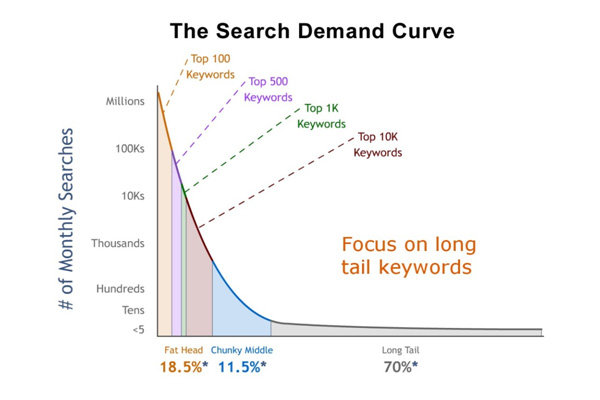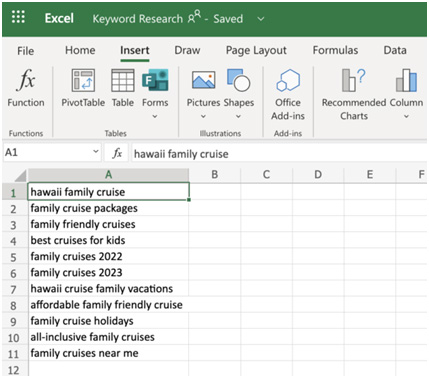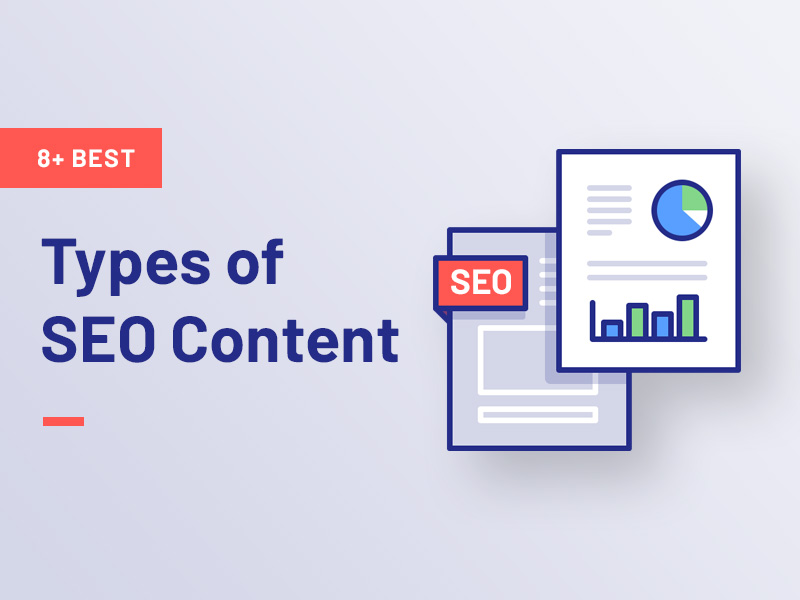With keyword research, search engine optimization can produce repeatable and long-lasting visibility.
Compared to the industry’s early days, SEO is a much larger discipline divided into numerous sectors.
But have you ever considered that one word might completely change the direction of your online presence? Your online success is shaped by keywords, which are the foundation of Hidden Opportunities in SEO. The correct ones elevate you, while the wrong ones derail your efforts.
It can be challenging to stay on top of things in the dynamic world of search engines. We present you with advanced keyword research best practice as a result. Get ready to explore the cutting-edge methods that will take your keyword research to the next level.
This Intent Analysis Guide covers keyword research, its importance, and how to start a successful SEO strategy.

What is Keyword Research?
Search engine optimization (SEO) includes a process called “keyword research.” It’s the time spent brainstorming a long list of search terms for which a website should be optimized. Website proprietors need to do some digging into their target demographics and search engines to compile such a list.
What Google queries do individuals use to find a specific good, service, company, job, or category of group? What do they think they’ll find, anyway? Website owners can use this list as a guide to produce content , especially in the realm of branding, that will result in higher-quality clicks. To stay current, keyword research must be repeated on a frequent basis.
This systematic grouping empowers users to find precisely what they’re looking for:
- Shoppers searching for specific items can find the ideal product page.
- Users looking for ‘how to’ guides can quickly access detailed pages.
- Individuals wanting to learn more about a person or brand can delve deep into all the necessary details.
When conducting Intent-Driven Keyword Research, one must determine whether investing time and effort to rank highly is worthwhile. Not all website traffic is equal, and searchers may not necessarily convert into customers. Therefore, comprehensive keyword research is necessary for determining which keywords warrant significant investment to produce high rankings and, in turn, attract potential visitors.
Why Keyword Research is Important
Proper Intent-Driven Keyword Research is crucial since it reveals the search terms that your audience employs. Owners of companies who use one set of terms to describe their goods while their intended market utilises an entirely different set! Because of this, potential clients are still looking for those websites. Therefore, there is a mismatch.
You should conduct extensive keyword research to avoid this mismatch. Using the words (search terms) your target audience uses will be ensured by this research. The search intent of your audience should also be taken into account. You can use this to determine the precise needs of your audience. The only thing left to do is to provide informative content that satisfies your audience’s queries!
Finding Hidden Gems in the Keyword Jungle

Long-tail keywords
- Long-tail keywords are very precise as they may have lower search volumes but greater conversion rates. They might help you delve deeper into keyword mining. Why? Mainly because they concentrate on customers who are almost ready to buy!
- Pro Tip: To uncover those profitable long-tail keywords that your competitors might ignore, use tools like Google’s Keyword Planner, Ahrefs, or SEMrush; it will unlock the Hidden Opportunities in SEO.
Analysing Search Intent
- Understanding the search intent behind each query is necessary to understand advanced keyword research properly. Do users seek out information? Evaluating similar goods? Prepared to purchase? You may tailor your content to their needs by understanding their objectives.
- Tip: To Unlocking SEO Potential and to determine the objective behind a keyword, look for trends in the search results, such as informational content, product pages, or service listings, as well as landing pages, such as easy accounting software or similar.
Competitor Analysis
- It’s usually a good idea to monitor your rivals. Discover what works for them by analysing their keyword strategy, then use those ideas to your benefit. Since imitation is the highest form of flattery, isn’t it?
- Pro Tip: Monitor your rivals’ keyword performance using tools like Ahrefs’ Site Explorer or SEMrush’s Domain Overview. Add these keyword performance reports to your work portfolio to further validate your research findings and SEO practices.
Seasonal and Trending Keywords
- Be proactive by spotting seasonal and trending keywords that can increase organic traffic at particular times of the year. Be sure to keep those chances from passing you by!
- Tip: Pay close attention to Google Trends as well as sector-specific news to detect fresh keyword prospects.
Local Keywords
- Pay attention to the effectiveness of local search as it is SEO Hidden Gems! Use location-specific keywords to attract local customers and stand out in your niche market.
- Pro Tip: Combine your primary keywords with local terms to build location-based keywords that draw in local searches.
Example: if your seo company is located in Halifax, Canada. Then you can add your keyword with location like SEO Company Halifax.
How to Perform Keyword Research?
Consider your purpose while deciding what your SEO objectives are.
Consider your goal before you begin. Consider inquiries like these:
- What is your company’s or organisation’s primary objective?
- What distinguishes it?
- Who precisely are you attempting to contact?
Furthermore, what assurances do you offer on your website? Take your time and put your mission in writing to find out SEO Hidden Gems. Upon achieving a comprehensive response to these inquiries, you will have initiated the initial and main phase of crafting your keyword plan.
List the terms you believe others could use to find you.
Making a list of your keywords is the second stage, and it is best done in a spreadsheet (such as Excel/Google Sheets). Try to put yourself in the shoes of your intended audience while keeping your purpose in mind.
- What are these folks going to be searching for?
- What search phrases would they use to find your fantastic service or product?
- Which of their “issues” is resolved by your product?
Write down as many responses as you can. A well-defined mission statement will help you identify your niche and unique selling propositions or what makes your company stand out. These are the keywords you wish to appear for in searches.

Source: https://yoast.com/keyword-research-ultimate-guide/
Collate and segregate keywords
Upon completing step 2 of your Intent-Driven Keyword Research on all of your “competitors”, you should come away with a limited number of carefully chosen keywords.
As an SEO enthusiast, many suggest going after commercial keywords with strong intent for purchase. However, this common approach has its downsides.
Firstly, due to social media commerce, many potential consumers in the transactional funnel are swiped by social media websites. Remarketing and behavioural targeting have driven many consumers to transact directly on these platforms, causing a decrease in consumers in the transactional portion of the search funnel.
Secondly, the competition in the transactional portion of the search funnel could be more manageable. Big corporations, like Amazon, Flipkart, YouTube, and other high-authority websites, want every possible consumer and can easily beat out smaller websites and businesses. Plus, Google prefers brands, making it even more difficult for small businesses to compete.
Determine a keyword strategy.
Having collected valuable data, it’s time to shape your keyword strategy. If you’ve dutifully followed the preceding steps, you should have a spreadsheet filled with abundant keyphrases and pertinent information about their competition and search intent.
However, there is one crucial question you must ask yourself: How does my website stack up against the SERPs? Is your site of equivalent magnitude and advertising funds? If so, your focus should be on the head terms. On the other hand, if you fall short, long-tail keywords should be your first port of call.
An array of well-crafted long-tail keywords can easily drive considerable traffic to your website. Subsequently, ranking for head terms will become more accessible once you’ve climbed up the long-tail ranks.
Keep improving your keyword approach.
Check the effectiveness of your keyword approach (search term) and make improvements.
After carefully evaluating SEO Insights and Opportunities and your ranking prospects for each term, publishing several outstanding articles (and optimising them properly), you should take some time to wait. Analyse your rankings. Is your article visual? Did it rank on Google’s first page of results? Or is it buried on pages 2 or 3? Be careful in assessing your SERP’s performance.
There are several techniques to monitor the performance of your content in the search results. Search for the terms you’ve optimised your content for on Google. You may also utilise Google Search Console to determine the search terms for which you are ranking.
No matter what you do, seeing if your efforts yield results is a good idea. If you can’t get on the first page, try writing another post with (even) long-tail keywords in mind. Make it more niche as well as specific. And monitor the outcome. Review it once more. Keep doing this till you get the first page of the SERPs!
Expert Keyword Research Tips
Optimise with Synonyms:
Instead of stuffing keywords into your article, use related keywords and synonyms. Google better understands your page.
Using these variations in your content boosts SEO Insights and Opportunities & your visibility in search results for different keywords.
Shoulder Keywords:
Shoulder keywords should accompany your primary keywords. Similar but different.
For Example: If your blog post is about the greatest Pacific Northwest hiking trails, your main keyword is “hiking trails” and your shoulder keywords are “hiking”, “trails”, “Pacific Northwest” and “outdoors”.
Using main and shoulder keywords increases readership.
Analyse Searcher Intent:
Google rankings demand more than keyword stuffing. Content must match the searcher’s intent. Creating relevant content requires knowing what people want.
Customising your content to fit searcher intent analysis for a keyword boosts your Google search rating.
Wrapping it Up
Now that you’ve successfully negotiated the tricky terrain of advanced keyword research, you are equipped with the information to discover the untapped potential for increasing organic traffic.
Starting your sustainable SEO strategy with keyword research is crucial as it generates a lengthy catalogue of targeted keywords. However, the biggest hurdle remains- creating content for each and every keyword to achieve your goal. Writing articles, blog posts and using visual content like creating free infographics, brochures, charts is essential to engage the audience and to secure a spot among search results.
Our Intent Analysis Guide has highlighted efficient and commonly used techniques for conducting advanced keyword research.







